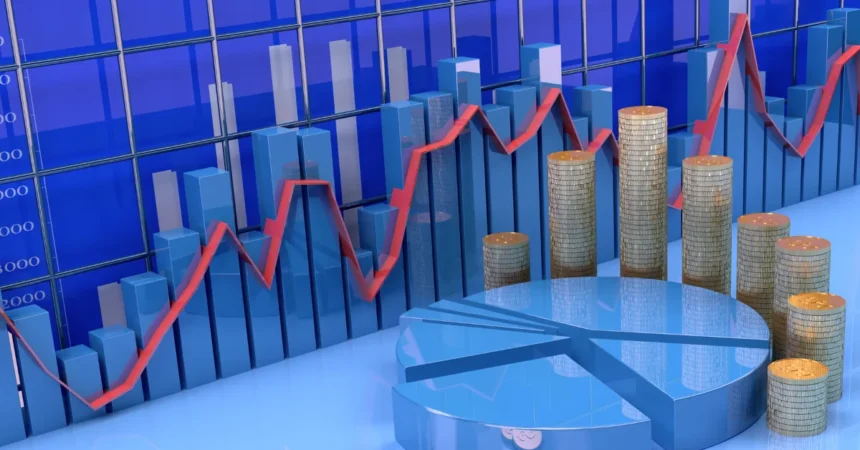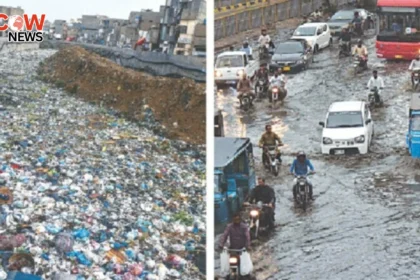rate of 6.4% for 2024. This revision reflects a notable increase in the region’s economic resilience, particularly due to Pakistan’s swift recovery from economic downturns. As economies worldwide grapple with the aftermath of the COVID-19 pandemic, geopolitical tensions, and inflationary pressures, South Asia’s ability to rebound presents both opportunities and challenges that warrant careful analysis.
Overview of the World Bank’s Projections
The World Bank’s South Asia Economic Focus report highlights the unique economic dynamics across the region, which includes Afghanistan, Bangladesh, Bhutan, India, the Maldives, Nepal, Pakistan, and Sri Lanka. Each country exhibits distinct economic trajectories influenced by local conditions, policy environments, and external factors.
In this forecast, the World Bank emphasizes the need for sustainable economic policies and the importance of fostering an environment conducive to investment and growth. The report notes that the region’s economic prospects are intertwined with global developments, including shifts in commodity prices, trade policies, and international demand for goods and services.
Key Drivers of Economic Recovery in Pakistan
Pakistan’s economic recovery has been pivotal in driving the region’s growth forecast. Several key factors contribute to this recovery:
- Economic Reforms and Policy Adjustments
The Pakistani government has enacted numerous reforms aimed at stabilizing the economy and fostering an environment attractive to investors. These reforms focus on improving fiscal discipline, enhancing tax collection systems, and streamlining bureaucratic processes. By reducing the red tape associated with doing business, the government seeks to encourage both domestic and foreign investments.
Moreover, the government has initiated programs to address corruption and increase transparency within public institutions. These efforts are crucial for rebuilding investor confidence and ensuring that resources are allocated efficiently. - Increased Exports and Trade Activities
Pakistan has experienced a resurgence in its export activities, particularly in textiles, agriculture, and manufactured goods. The country has diversified its export markets, which has helped mitigate the impact of fluctuations in specific markets. The government’s proactive approach in negotiating trade agreements and enhancing diplomatic relations has contributed to increased export volumes.
Furthermore, the textile sector, which is a significant driver of Pakistan’s economy, has benefited from rising global demand as countries recover from the pandemic. This sector’s ability to adapt to changing consumer preferences and sustainability concerns has positioned it well in the international market. - Recovery from the COVID-19 Pandemic
The COVID-19 pandemic posed unprecedented challenges, but Pakistan’s recovery has been relatively rapid compared to initial projections. As vaccination rates rise and restrictions are lifted, economic activities have resumed across various sectors. The government’s effective management of vaccination campaigns has played a crucial role in restoring public confidence and facilitating the safe reopening of businesses.
The agricultural sector, in particular, has rebounded strongly, benefiting from favorable weather conditions and government support. Initiatives to enhance agricultural productivity, including investment in technology and infrastructure, have further supported this recovery. - Infrastructure Development Initiatives
Significant infrastructure projects, especially those associated with the China-Pakistan Economic Corridor (CPEC), have stimulated economic growth. Investments in roads, energy, and transportation infrastructure have improved connectivity within the country and with neighboring regions. These projects have not only created jobs but have also enhanced access to markets for local businesses.
Additionally, infrastructure development has long-term implications for economic growth, as improved logistics and transportation networks facilitate trade and investment. The focus on renewable energy sources in infrastructure projects also reflects a commitment to sustainable development. - Remittances from Overseas Workers
Remittances from Pakistanis working abroad remain a vital source of foreign exchange and have provided a buffer against economic shocks. The steady inflow of remittances supports domestic consumption and investment, contributing to overall economic stability. In a time of uncertainty, remittances have allowed families to sustain their livelihoods and invest in education and health.
Moreover, the government has implemented measures to facilitate the transfer of remittances through official channels, ensuring that more funds are brought into the formal economy. This strategy not only bolsters foreign exchange reserves but also enhances economic transparency.
Regional Comparisons and Growth Potential
While Pakistan’s recovery is a cornerstone of the region’s growth forecast, other South Asian countries exhibit varied economic prospects. India, for example, is projected to experience robust growth driven by strong domestic demand, digital transformation, and extensive infrastructure investments. The Indian government’s initiatives to boost manufacturing and attract foreign direct investment have positioned the country as a key player in the region.
Bangladesh continues to show resilience as well, with its thriving garment industry and increasing foreign investment. The country’s focus on diversifying its economy and enhancing productivity has contributed to sustained growth, despite global economic uncertainties.
However, challenges persist across South Asia. Inflationary pressures, driven by rising commodity prices and supply chain disruptions, can hinder growth prospects. Additionally, geopolitical tensions in the region, particularly between India and Pakistan, pose risks to economic stability. The World Bank report emphasizes the need for countries to remain vigilant and proactive in addressing these challenges to maintain growth momentum.
Implications for Policymakers
The upward revision of South Asia’s growth forecast presents a unique opportunity for policymakers to leverage the positive economic outlook. Key areas for consideration include:
- Sustaining Economic Reforms
Policymakers must prioritize the continuation of economic reforms that enhance efficiency, transparency, and competitiveness. Addressing structural issues and bureaucratic inefficiencies can pave the way for sustained growth and investment. For example, streamlining customs processes can facilitate trade and reduce costs for businesses, thereby enhancing competitiveness. - Enhancing Regional Cooperation
South Asian countries can benefit from closer economic ties and regional cooperation. Initiatives aimed at fostering trade, investment, and cultural exchange can create synergies that enhance collective growth. Regional trade agreements, such as the South Asian Free Trade Agreement (SAFTA), should be revisited and strengthened to promote intra-regional trade.
Additionally, addressing non-tariff barriers and facilitating cross-border investments can further enhance economic integration within the region. - Focus on Human Capital Development
Investing in education, healthcare, and skills development is essential for ensuring that the workforce is equipped to meet the demands of a rapidly evolving economy. Policymakers should prioritize initiatives that enhance human capital to drive innovation and productivity. This includes expanding access to quality education, vocational training programs, and lifelong learning opportunities.
Moreover, fostering an environment that encourages research and development can drive technological advancements and innovation. - Mitigating Climate Risks
Climate change poses significant challenges for South Asia, affecting agriculture, water resources, and disaster resilience. Policymakers should prioritize sustainable development practices that address climate risks while promoting economic growth. This includes investing in renewable energy, promoting sustainable agriculture, and enhancing disaster preparedness measures.
Implementing policies that support green technologies can not only mitigate climate risks but also create new economic opportunities in emerging industries.
The Role of International Partners
International organizations, such as the World Bank, play a critical role in supporting South Asian countries as they navigate the path to recovery and growth. Collaborative efforts, technical assistance, and financial support can help countries address pressing challenges and achieve their economic potential. The World Bank’s projects and initiatives can provide valuable resources for capacity building, infrastructure development, and policy formulation.
Additionally, partnerships with private sector actors can drive innovation, create jobs, and enhance competitiveness. Engaging with international investors can facilitate knowledge transfer and best practices in various sectors. Public-private partnerships can be instrumental in addressing infrastructure gaps and promoting sustainable economic development.
The Need for a Balanced Approach
While the growth forecast presents an optimistic outlook, it is essential for policymakers to adopt a balanced approach that addresses economic disparities and social inequalities. Ensuring that the benefits of economic growth are equitably distributed among different segments of the population is crucial for fostering social cohesion and stability.
Investing in social safety nets, promoting inclusive economic policies, and addressing regional disparities can help mitigate potential conflicts arising from inequality. Engaging marginalized communities in the economic development process can empower individuals and contribute to a more resilient economy.
Future Prospects and Challenges
As South Asia looks ahead, several prospects and challenges will shape the economic landscape:
- Technological Advancements
The rapid pace of technological advancements presents opportunities for growth and innovation. South Asian countries can leverage digital technologies to enhance productivity, improve service delivery, and create new economic opportunities. Initiatives to promote digital literacy and expand internet access can empower individuals and businesses. - Geopolitical Tensions
Geopolitical tensions within the region can pose significant risks to economic stability. Policymakers must engage in diplomatic efforts to address disputes and foster cooperation. Building trust and communication among neighboring countries is essential for promoting a peaceful and stable economic environment. - Global Economic Dynamics
The global economic environment will continue to influence South Asia’s growth trajectory. Changes in commodity prices, trade policies, and international demand for goods and services can impact economic performance. Policymakers should remain agile and responsive to external shocks to safeguard economic stability. - Demographic Changes
South Asia’s youthful population presents both opportunities and challenges. Policymakers must invest in education and skills development to harness the potential of this demographic dividend. Creating job opportunities and supporting entrepreneurship can empower young individuals and contribute to sustainable economic growth.
The World Bank’s upward revision of South Asia’s growth forecast to 6.4% underscores the region’s resilience and potential for recovery. Pakistan’s quick rebound highlights the effectiveness of economic reforms and policy measures in driving growth. As countries across South Asia work to sustain this momentum, the focus on collaboration, human capital development, and sustainable practices will be crucial in achieving long-term prosperity.
#SouthAsiaGrowthForecast #PakistanEconomy #WorldBank #EconomicRecovery #Investment #InfrastructureDevelopment #Trade #SustainableDevelopment #PolicyReform #RegionalCooperation







